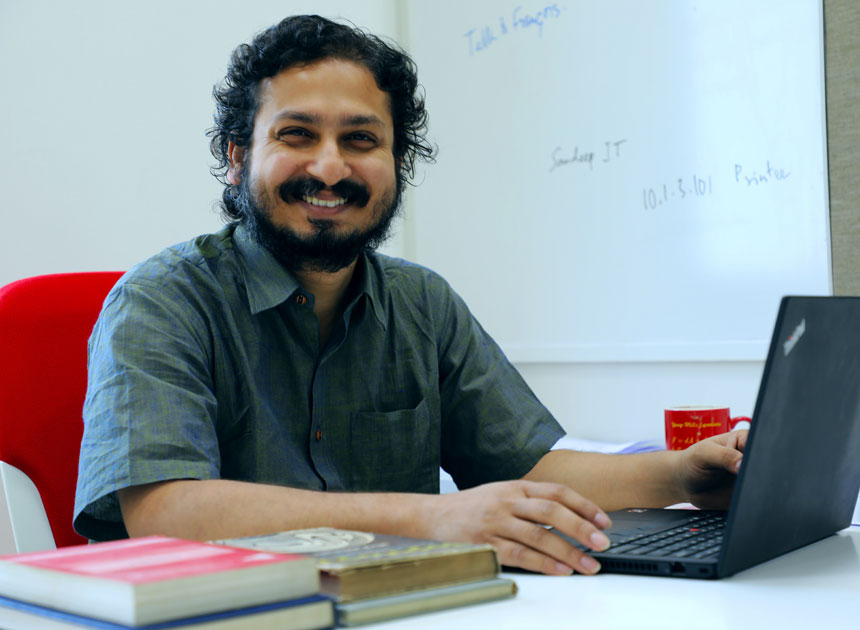
Over the last century, human activity has led to a significant increase in the atmospheric carbon dioxide (CO2 ), nitrogen, and sulphur oxide. Along with this, there is a steady depletion of fossil fuel resources as well. This has led to an almost irreversible change in our natural environment, and has also shown that natural carbon fixation is not enough. Addressing the effects of climate change and global warming has become imperative to our survival. All around the world, there is a sense of emergency – ‘we must do something soon’. Scientists, engineers, environmentalists, policymakers, and sociologists have all been working towards this end. There is no single solution that can solve for the problem of meeting future demands as well as managing environmental consequences. Fundamental research in science – particularly chemistry – attempts to understand elements and processes in the natural world in a way that can help develop alternate sources of energy, as well as create new and advanced materials. To establish the most effective solution, it is necessary to understand the foundations, and that is what we are attempting to do at the Department of Chemistry at Ashoka.
Our lab is trying to contribute in the area of fundamental research – finding sources for artificial energy as well as devising ways to protect the environment from excessive green-house gas emissions. We are focusing on converting carbon dioxide (CO2 ) to a value-added product like methane (CH4 ). We are also producing hydrogen (H2 ) from water or any proton source like acids, which can be used as a substitute to fossil fuels. There are several ways to do this. What we are doing here is called ‘Biomimetic Molecular Catalyses’. The natural enzyme hydrogenase produces H2 from the hydrogen ion. The research at our lab involves mimicking these enzymes while also looking for better catalysts. We are currently on the verge of finishing our first project where H2 has been produced using an inactive material.
In nature, there are several enzymes which capture atmospheric CO2 and convert it into formic acid, a valuable industrial feedstock. We are mimicking these enzymes and synthesising metal-based complexes, especially iron, as it is the second most abundant element on earth. In this project, other than dealing with molecular catalysts, we are also focusing on developing new materials. We use a furnace, which reaches the temperature ~400 oC, to burn plastic waste from our lab and get carbon through a process called carbonisation. The end material is similar to what is used in air purifiers and air conditioners except here we incorporate a metal framework inside it. This helps activate CO2 easily. The department has also recently initiated Gas Chromatography, which is a novel technique that not only separates, but also detects the vapourised compounds generated from the reaction within an hour.
Activating CO2 is not an easy job as it requires a huge amount of energy to break the carbon oxygen bond as the molecule is very strong, thermodynamically. This type of reaction requires very harsh conditions like high temperature and often ends with a lot of environmentally benign waste products. To overcome this challenge, scientists prefer to carry this process out electrochemically, giving current as an energy form. This reaction is cleaner, and produces the least amount of waste while also giving the highest atom economy. The process is safe and applicable to an industrial scale. In our lab, all reactions are conducted thermodynamically – digging into the mechanism and trying to find better catalysts than before.
As scientists, we can harness our knowledge for a better environment. The challenge of balancing our energy needs and mitigating the effects of climate change will not fade away in a day. Fundamental research plays a key role here – if we can’t realise how atoms behave with each other inside a molecule, how do we tame them and use them accordingly? Basic scientific research in this regard, can serve as scientific capital. At Ashoka, we are constantly thinking of ways to convert and synthesise CO2 to reduce greenhouse gas emissions, as well as save renewable energy resources.
Munmun Ghosh is Assistant Professor of Chemistry. She works in the area of molecular engineering and research allying biology and chemistry.

Members of the ArtiVerse Club write about using art to make concepts in science accessible

Sourav Ghosh, Assistant Professor of Mathematics, on what makes math distinct from other branches of science